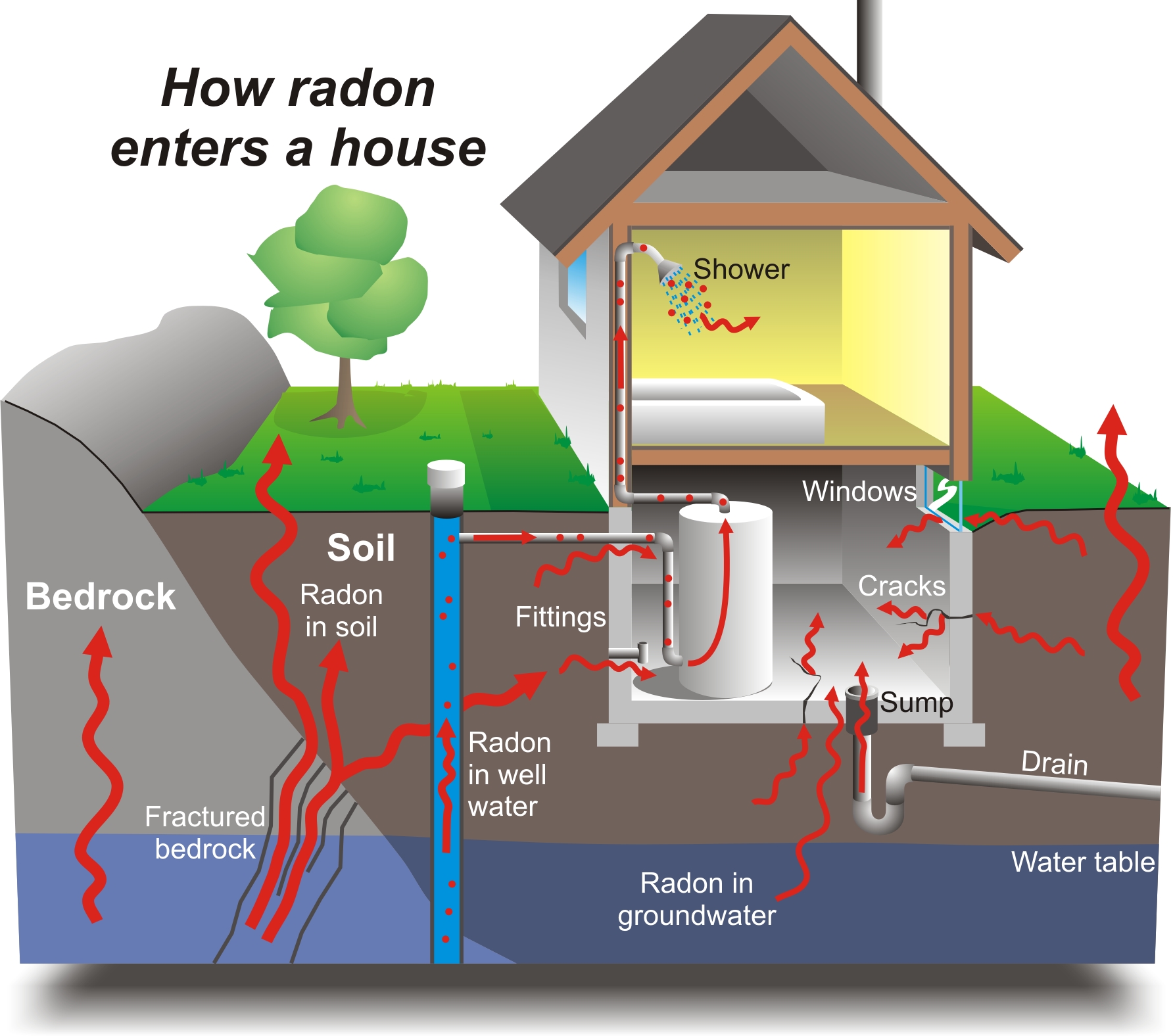Detection and Remediation—
Critical Factors in Home Isolation
 By Rosemary Tayler By Rosemary Tayler
April 3, 2020
Given that everyone is staying home to slow the spread of the Coronavirus , the concern about prolonged exposure to radon gas leaking into basements is a complicating factor in Lanark County.
Rob Mahoney is a mechanical engineer in Ottawa who specializes in radon gas detection and remediation. I reached out to him last week to gain a deeper understanding of this health related problem.
Rob is a founding member of the Canadian Association of Radon Scientists and Technologists (CARST). He is also on the board of directors of the Association Certification body—the Canadian Radon National Protection Program. “Radon gas is part of the decay process of uranium,” he said. “Technically, this gas does not directly cause lung and other related cancers, but the subsequent breakdown products (alpha particles) in the decay chain do cause these cancers. Radon is around long enough to be measured and there is a direct corelation of the amount of human and animal exposure to radon and these various cancers.”
Canadian Tire and Home Hardware sell single use Radon Test Kits. A test kit is set in one place in a home for three months at a time and then sent to a certified lab for analylsis. Rob recommends the use of electronic monitors that can be bought over the internet.
“An electronic monitor can quickly and easily test the radon level in the basement, then the bedroom or anywhere else in the home. The basement is critical as this is where the gas seeps in through cracks and crevises. The sump pump drain and the in-flow water pipe from the well may not be properly sealed, and these are the major entry points,” he said. “This gas is heavier than air, so it seeps in from the ground underneath and mostly settles in the basement. If people spend a lot of time in their family room in the basement, consistent long time exposure can cause lung cancer.”
The units used to measure radon gas in Canada are becquerel. Health Canada and many other countries consider the upper acceptable limit to be 200 becqueresl per cubic metre (Bqm3), while the World Health Organization claims that 100 Bqm3 of exposure is the safe limit.
Many of the electronic monitor devises are shipped from the United States where picocurie sis the standard unit of radon measurement. Thirty Seven becquerel sequals one picocurie, so 200 becquerel sequals 5.4 picocuries.
“There is no such thing zero radon gas. It is everywhere. Outdoor levels range from 18 to 21 Bqm3. Our goal is to reduce the excess accumulation in peoples homes.
“I prefer to use the electronic monitors because they can be used again and again and these devices provide readouts within a few days to a week,” Rob said.
“What happens is that the tiny sacks (called alveoli) in our lungs get eradiated over time. It can take 30 years of radon exposure before lung cancer is detected. The surface area on our lungs is huge. However, if our lungs are compromised due to smoking or tendency for pneumonia, there is more stress on our breathing capacity.”
Rob concluded by saying that an air tight lid on the sump pump drain as well as sealing over a dirt floor crawl spaces among other things greatly reduces the prevalence of radon in homes.
For a clear, concise presentation on radon gas, Rob recommends the 12 minute TED Talk titled Radon Gas in Our Homes; The Science Behind the Danger presented by Dr. Arron Goodarzi.
|


![]()

 By Rosemary Tayler
By Rosemary Tayler